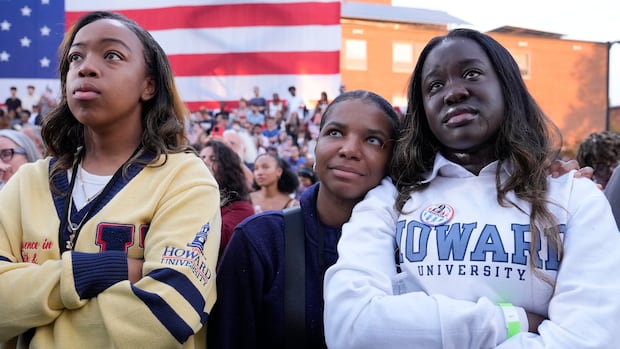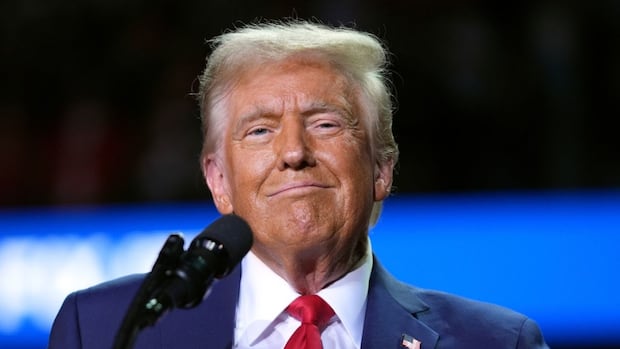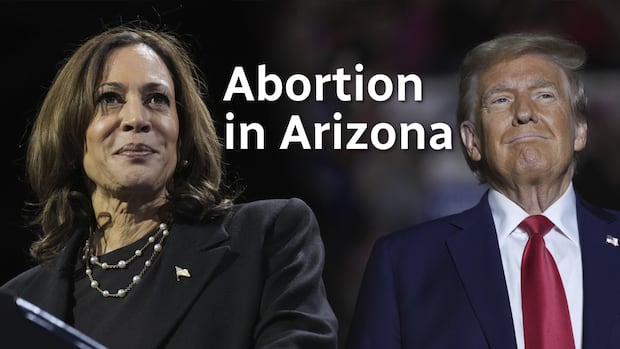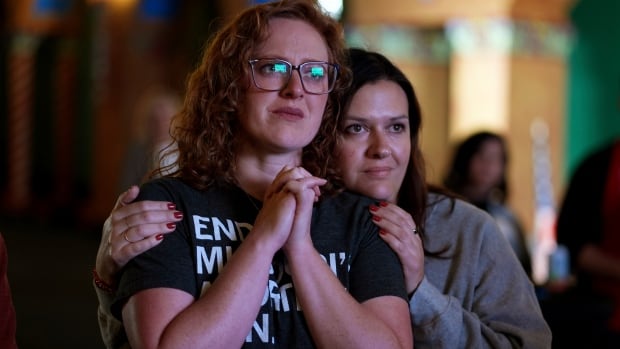
If abortion rights advocates were optimistic for the start of a seismic shift Tuesday night, it didn’t happen in the way they’d hoped.
Abortion rights amendments passed in seven states but were defeated in three others, as Democratic candidate Kamala Harris — who had campaigned on the pitch that women should be free to make their own decisions about their bodies — lost the U.S. election to Republican Donald Trump.
Trump appointed three of the justices to the U.S. Supreme Court who formed the conservative majority that overturned federal abortion rights in 2022, and he has also claimed that he would “protect women” and ensure they wouldn’t be “thinking about abortion.”
- Do you have a question about the U.S. election result? Or what a second Trump term will look like? Send an email to [email protected].
Harris had pitched that if Trump were elected more restrictions would follow, and analysts have noted Democrats were banking that they’d done enough to tap into the pro-choice sentiment to secure their victory.
But in state after state, Trump outperformed his 2020 election results, while Harris failed to do as well as Joe Biden did in winning the presidency four years ago. Trump will become the 47th president of the United States, working with a Senate that will now be in Republican hands. The state of the House is still undecided.
So what does Trump’s stunning comeback mean for abortion rights going forward?
“I don’t think anything good can come out of this result for women’s reproductive justice,” said Shana MacDonald, the O’Donovan Chair in Communication at the University of Waterloo, who researches feminist, queer and anti-racist social and digital media.
Defeated Democratic presidential nominee Kamala Harris said in her concession speech Wednesday that although many people may feel the U.S. is entering into a dark time, they should be encouraged to keep working in the face of setbacks.
“I think there’s going to be a repealing of rights for a lot of people, and I think we’re going to need a lot of strategic political organizing to help protect the people who are most vulnerable.”
The enshrining of abortion rights at some state levels offers some hope as advocates grapple with what a second Trump term could mean.
“At this point, I think everyone in the movement is just trying to hang on to those small wins that were gained in terms of those ballot measures,” said Martha Paynter, an assistant professor in the faculty of nursing at the University of New Brunswick and author of Abortion to Abolition: Reproductive Health and Justice in Canada.
“And we’re taking stock, as we do, about what we do next to circumvent these threats and continue to provide needed care and prevent death.”
Republican Donald Trump will become the 47th president of the United States after beating Democratic candidate Kamala Harris to complete a stunning political comeback.
Abortion policy contrasts
Party divides over abortion have widened in the past decade, and the contrast between the parties’ platforms and policies are stark, explained the Brookings Institution in September.
“The Democratic Party platform, written when President Biden was still the Democratic candidate for president, has its own section on ‘reproductive freedom’ that embraces the idea that abortion is health care,” writes Brookings analyst Stephanie K. Pell.
By contrast, the word “abortion” only appears once in the 28-page Republican Party platform, Pell writes, with the statement, “[w]e will oppose late-term abortion, while supporting mothers and policies that advance prenatal care, access to birth control, and IVF.”
“The Republican Party platform’s concise treatment of abortion should not be separated from Project 2025,” she added, explaining that the 922-page conservative think-tank document is “replete with instances of the word abortion, along with detailed plans for how a Republican administration should promote ‘pro-life’ policies.”
Trump, however, has repeatedly sought to distance himself from the plan drafted by the conservative Heritage Foundation, denying any connection with it.
Before Tuesday, seven states had already put the issue of abortion rights directly to voters following the U.S. Supreme Court decision to overturn the landmark 1973 Roe v. Wade ruling. Abortion rights campaigns had won all of those elections.
Voters approved most of the referendums expanding the right to abortion in U.S. states on Tuesday, while Florida, Nebraska and South Dakota rejected such measures, giving anti-abortion advocates their first victories since the U.S. Supreme Court ended the constitutional right to the procedure in 2022.
“Unfortunately, it wasn’t a full sweep, but most of the time when abortion rights are on the ballot, they have been affirmed, even in Red states. We saw that again last night with most of the states that had abortion on the ballot affirming the right,” Paynter said.
“Of course, the right of a population to govern their own bodies should never be something that people vote on, but that is the case.”
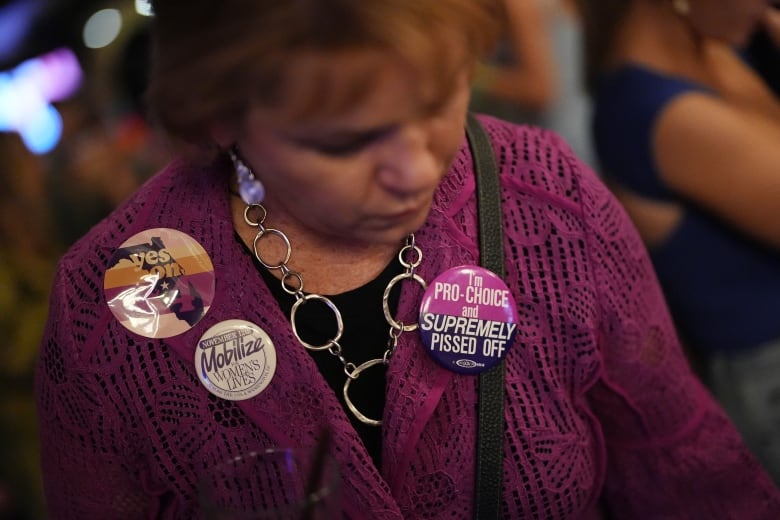
‘Abortion bans don’t stop abortions‘
Meanwhile, Democrats have voiced their fear that if Supreme Court Justices Clarence Thomas, 76, and Samuel Alito, 74, retire during Trump’s presidency, he’ll be able to replace them with younger conservatives. Trump has also taken back control of the Senate, which votes to confirm federal court judges and Supreme Court justices.
Paynter says it’s telling that the number of abortions in the U.S. continues to rise despite the restrictions. And this is reflective of the amount of work being done by those in the abortion care movement in states without bans, she added.
In the U.S. presidential race, voters in Arizona tell CBC’s Jenna Benchetrit how the candidates’ stances on abortion will factor into their decision on election day.
“This affirms and validates what we know to be true, that abortion bans don’t stop abortions,” Paynter said.
But the work needs to continue, she added, especially to protect the ballooning rise in the number of tele-medicine abortions. These are fuelled at least partially by the need of patients in ban states receiving care from providers in states with shield laws, Paynter said.
“The most acute worry for us is that there will be threats to that tele-medicine apparatus that has been so successful in continuing to make care available.”
Sarah Newhouse, who lives in Philadelphia, one of the battleground states where Trump declared victory, told CBC News she feels privileged that their governor has promised to veto any anti-abortion bills that cross his desk.
“But for the rest of the country it’s pretty bleak,” she added.
‘Seemed like a galvanizing call’
Unlike Hillary Clinton’s 2016 campaign, Harris didn’t focus on her own gender and the fact she could be the first female U.S. president. She did, however, court women in both parties with a message centred on freedom and the hopes that abortion would be a strong motivator for women at the ballot box.
About half of women backed Harris, while about half of men went for Trump, according to the Associated Press’ VoteCast, which is largely consistent with the shares for Biden and Trump in 2020.
MacDonald says she’s surprised by the outcome.
“It seemed like women’s investment in bodily autonomy actually cut across lines. It seemed like that was going to be a galvanizing call for women across political parties and that it would bring together a significant vote,” she said.
But she adds she still doesn’t think it was the wrong strategy, because Harris’s gender was always going to be a “political liability” — and that, on some level, “we have always known this.”
“We probably need to never underestimate that lack of political will to have a woman in an office of power,” MacDonald said. “No amount of cultural feminism is going to change that. No amount of posters and hashtags is going to change that at the voting booth.”
Philadelphia resident Rakerra Jones, 19, says she feels the same way.
“I honestly can say that I knew Trump was gonna win because, to be honest, they won’t let a woman … sit in office, especially a woman of colour.”
